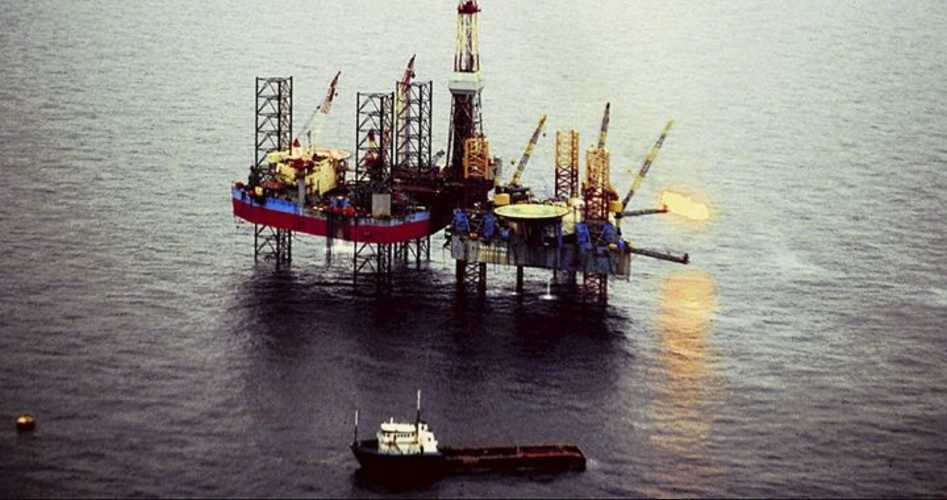
Wednesday’s crude oil price drop caught hedge fund managers, big money investors, day traders, and OPEC by surprise, with the sell-off, the biggest one-day drop in 13 months, continuing into Thursday. The five-percent drop on Wednesday pushed crude oil down to $50 a barrel, with Thursday witnessing a further drop to $49. Early Tuesday morning crude was selling at $54 a barrel.
The sell-off started with the announcement on Tuesday by the American Petroleum Institute (API) that domestic crude inventories rose by a whopping 11.6 million barrels the previous week, against expectations of an increase of just 1.6 million. It gained momentum after the U.S. Energy Information Administration reported on Wednesday an 8.2 million barrel climb in domestic crude supplies – the ninth increase in a row — bringing total commercial inventories to a record weekly level of 528.4 million barrels.
It was exacerbated by comments by Saudi Arabia’s energy minister, Khalid al-Falih. In a speech in Houston on Wednesday, he led many to believe he also was caught by surprise: “We see the green shoots of recovery in the [global oil] industry. The green shoots are here in the U.S.” And then he added: “Maybe they’re growing too fast?”
This was more than enough for day traders and short-term big money investors. Their bullish expectations were based on the ability of OPEC’s production cut to limit supplies and force prices higher. Their bets on higher crude prices pushed the ratio of long positions versus shorts to the highest level in 10 years, according to data from the Commodity Futures Trading Commission, and close to an all-time record level. They began to close their long positions, pushing crude oil prices down, accelerating the decline into the close.
Bulls weren’t helped any either by comments from Harold Hamm, the billionaire founder and CEO of Continental Resources, who told the Houston oil conference that U.S. production growth “is going to have to be done in a measured way or else we’ll kill the market.”
Also hanging over the market is the announcement that the Department of Energy is going to be selling off some 16 million barrels from the United States’ strategic petroleum reserve.
All of which changed market psychology, at least in the short term, according to Ole Hanson, head of commodity trading at Saxo Bank:
The market psychology has changed, with the longs now looking to reduce [their positions] or get out [altogether]. They were looking for a bounce to sell into, but as it failed to materialize, they resumed selling.
Some short-term buyers looking for a bounce stopped themselves out once [crude] broke below $50 [a barrel].
In the long term, the pressure for ever lower crude oil prices continues to grow, as does OPEC’s irrelevancy as a major player in the global oil market. OPEC’s production cut plan, alleged to have some 90-percent compliance among its members, has had precious little impact on the price of oil. There was an initial bounce, but since early January crude oil prices have fallen by nearly 15 percent. This is not what OPEC was expecting or planning for. Most of the cartel members need higher prices to keep from going further into debt to pay for their welfare states and military adventures. Saudi Arabia, in particular, needs higher prices in order to maximize the sale of part of its state-owned oil company, Aramco, in 2018.
So persuasive is the bearish case for oil — lower prices which would benefit American consumers directly at the pump and indirectly from lower prices for the estimated 6,000 products made from petroleum derivatives — that Dieter Helm, an economist and professor of energy policy at Oxford, said that OPEC’s plan to cut production was exactly the wrong thing for them to do:
For the [oil producers] in the Middle East and elsewhere, increasing production is quite a good idea, because [they’re] going to need the money and you might as well get your stuff out of the ground now rather than later….
OPEC may have cobbled together something for six months — in my view, relatively ineffectively — but this is a temporary dam and it is very, very likely that it will fail.
American technology is simply overwhelming attempts by OPEC to change the direction of oil prices. Much has been written about how that technology is not only allowing idle rigs to be put back into service more rapidly, but how those rigs have become vastly more efficient once in place. These improvements continue to push down the breakeven points for American oil producers, a battle that OPEC is doomed to lose over the long run.
In addition, the advent of electric vehicles — autonomous vehicles, along with drones and robots — continues to reduce the demands for energy for transportation needs. Drones are delivering pizzas and new six-wheeled robots are delivering hot meals in test markets around the country.
All of which is putting existential pressure on the OPEC cartel, which has believed from the beginning that it could, through collusion, keep oil prices where they needed to be to maximize their own returns. Those days are coming to a close.
There has always been volatility in the crude oil markets, and that will continue. But the inevitable pressure on prices is downward, bringing to a close the days when Middle East sheiks could control them.
An Ivy League graduate and former investment advisor, Bob is a regular contributor to The New American magazine and blogs frequently at LightFromTheRight.com, primarily on economics and politics. He can be reached at [email protected].
Related article:



